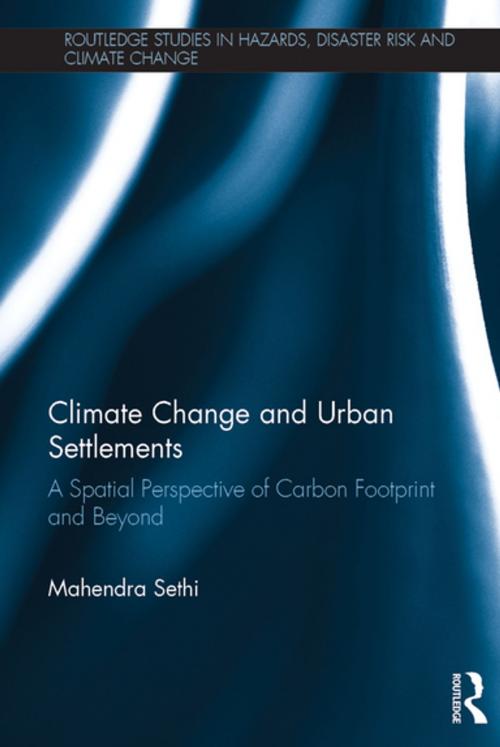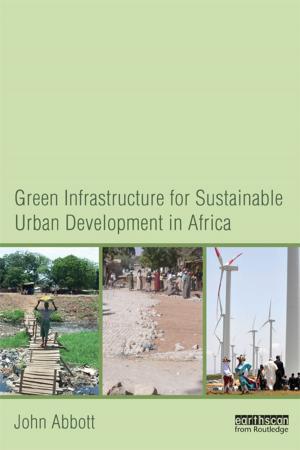Climate Change and Urban Settlements
A Spatial Perspective of Carbon Footprint and Beyond
Nonfiction, Science & Nature, Science, Earth Sciences, Geography, Social & Cultural Studies, Social Science, Human Geography| Author: | Mahendra Sethi | ISBN: | 9781315398488 |
| Publisher: | Taylor and Francis | Publication: | May 18, 2017 |
| Imprint: | Routledge | Language: | English |
| Author: | Mahendra Sethi |
| ISBN: | 9781315398488 |
| Publisher: | Taylor and Francis |
| Publication: | May 18, 2017 |
| Imprint: | Routledge |
| Language: | English |
Climate change and urbanization are two of the greatest challenges facing humanity in the 21st century, and their effects are converging in dangerous ways. Cities contribute significantly to global warming, and as the world further takes a rural-urban population tilt, the next few decades pose a great challenge in addressing global disparities in the access and allocation of carbon.
This book explores the ways in which cities, through their spatial development, contribute to greenhouse gas (GHG) emissions and looks at the ways in which rapidly urbanizing cities in low- and middle-income countries can be planned to reduce overall GHG emissions. The book considers key questions such a: What should be the appropriate economies of scale for cities in a country? What is the most favourable rate of urbanization? What should be the most suitable spatial pattern for a city? And what are appropriate regulatory, economic or governance mechanisms to achieve a low-carbon society?These issues are explored through data analysis of over 156 developing countries and through a specific case study of India. India acts as an interesting example of how societies undergoing rural-to-urban transformations could become green within the planetary boundaries while systematically addressing national and local urban governance. The research concludes with a future pathway that is committed to low-carbon and high-equity spatial development, and will find pertinence to researchers and practitioners alike.
This book provides a new tool for policymakers, planners and scholars to rationally and equitably account for global carbon space, prioritize low-carbon strategies for national urbanization and planning individual cities, in addition to recommending an urban governance framework inclusive of green agenda.
Climate change and urbanization are two of the greatest challenges facing humanity in the 21st century, and their effects are converging in dangerous ways. Cities contribute significantly to global warming, and as the world further takes a rural-urban population tilt, the next few decades pose a great challenge in addressing global disparities in the access and allocation of carbon.
This book explores the ways in which cities, through their spatial development, contribute to greenhouse gas (GHG) emissions and looks at the ways in which rapidly urbanizing cities in low- and middle-income countries can be planned to reduce overall GHG emissions. The book considers key questions such a: What should be the appropriate economies of scale for cities in a country? What is the most favourable rate of urbanization? What should be the most suitable spatial pattern for a city? And what are appropriate regulatory, economic or governance mechanisms to achieve a low-carbon society?These issues are explored through data analysis of over 156 developing countries and through a specific case study of India. India acts as an interesting example of how societies undergoing rural-to-urban transformations could become green within the planetary boundaries while systematically addressing national and local urban governance. The research concludes with a future pathway that is committed to low-carbon and high-equity spatial development, and will find pertinence to researchers and practitioners alike.
This book provides a new tool for policymakers, planners and scholars to rationally and equitably account for global carbon space, prioritize low-carbon strategies for national urbanization and planning individual cities, in addition to recommending an urban governance framework inclusive of green agenda.















